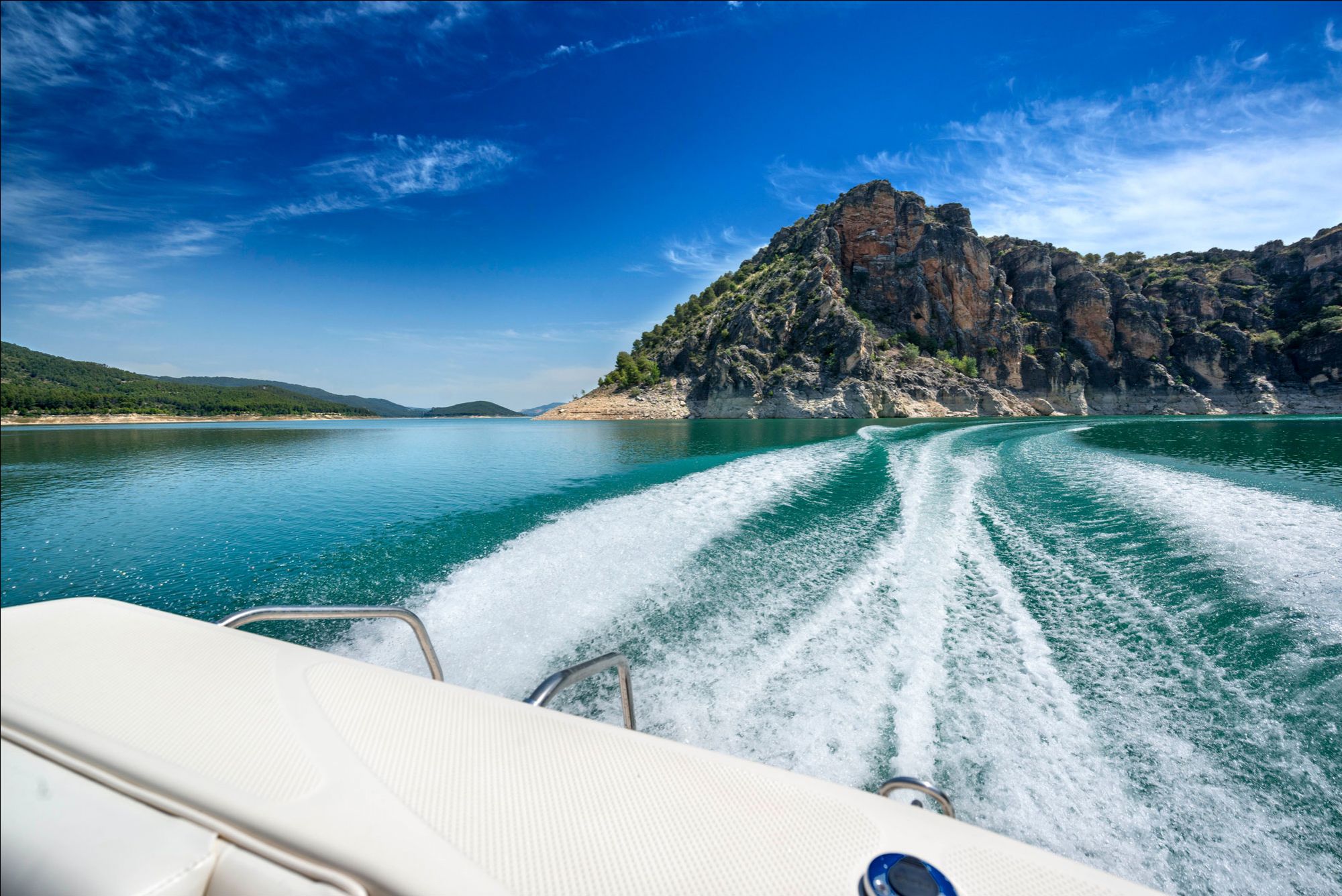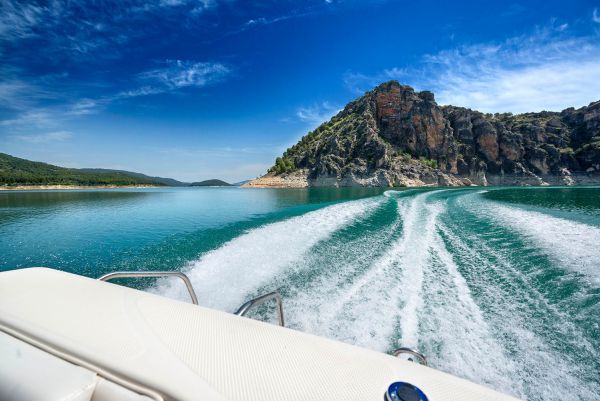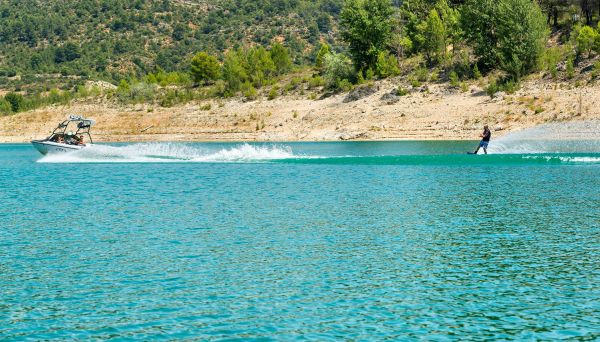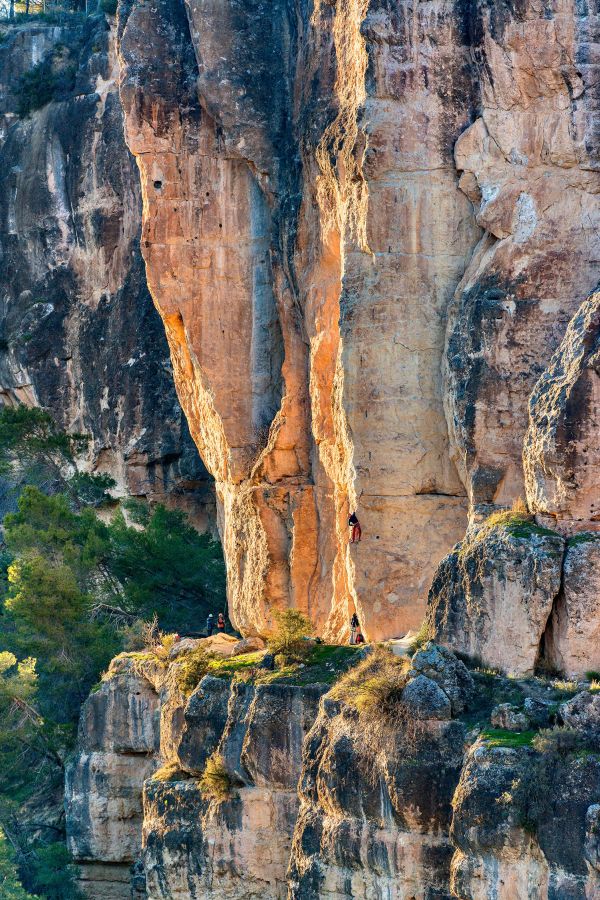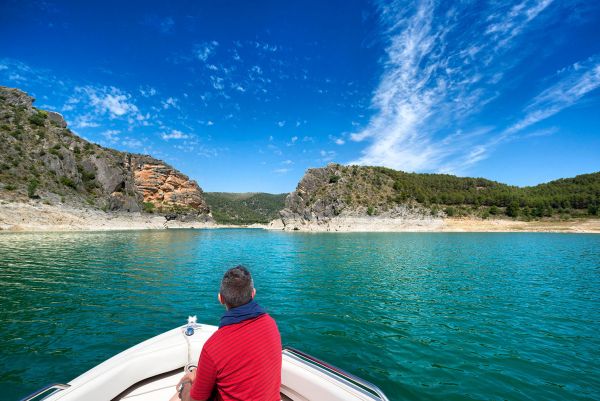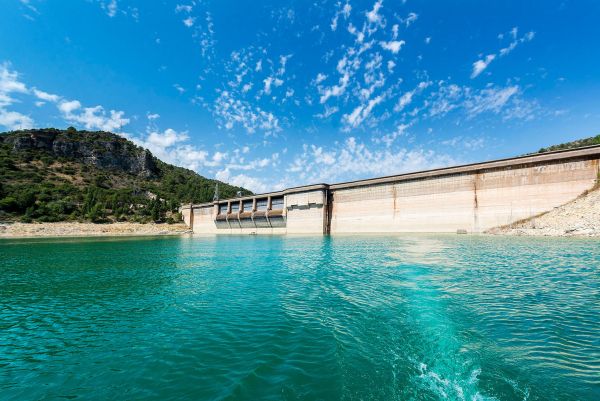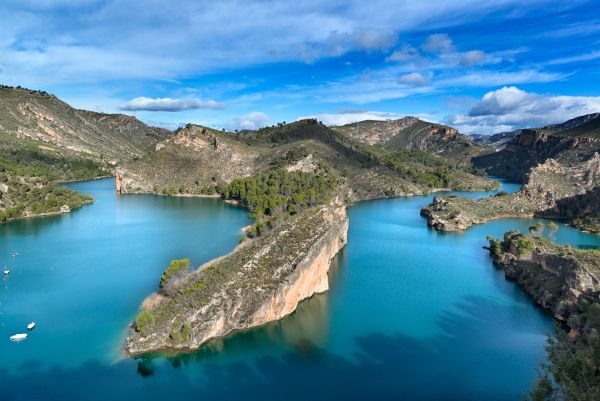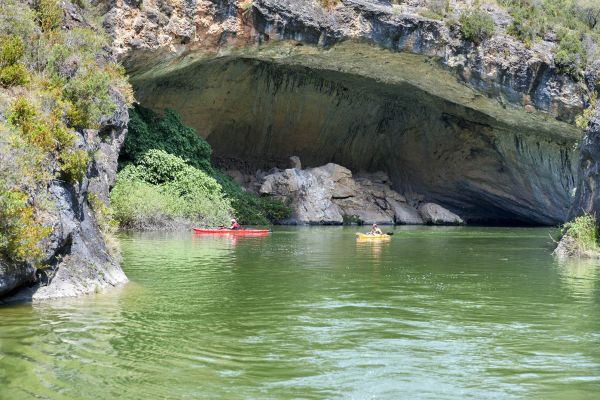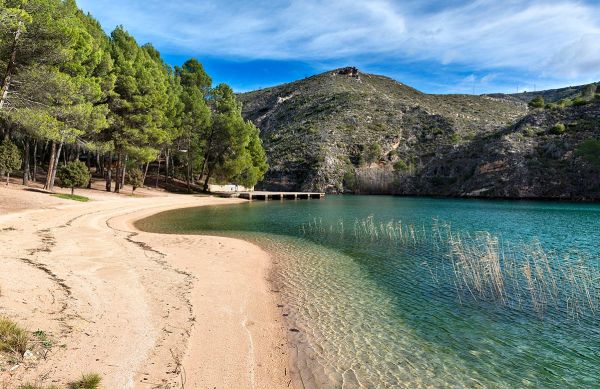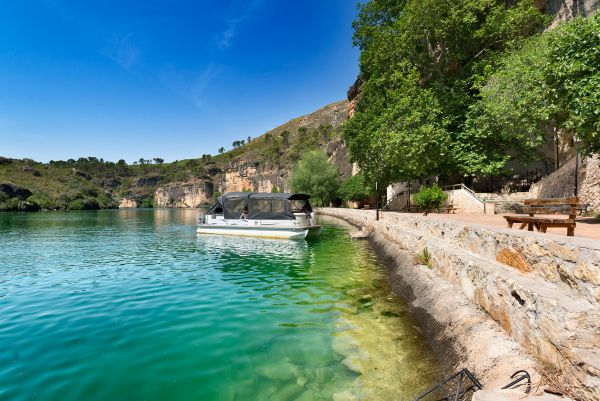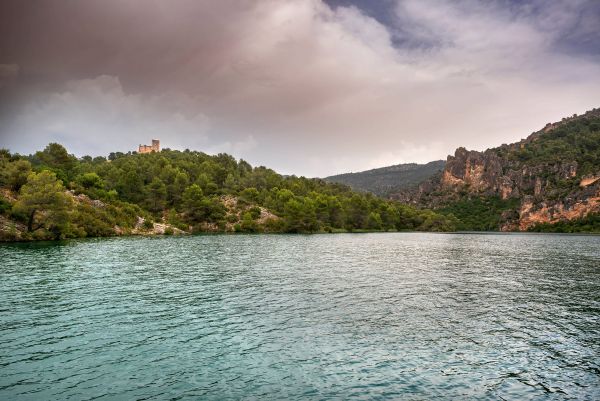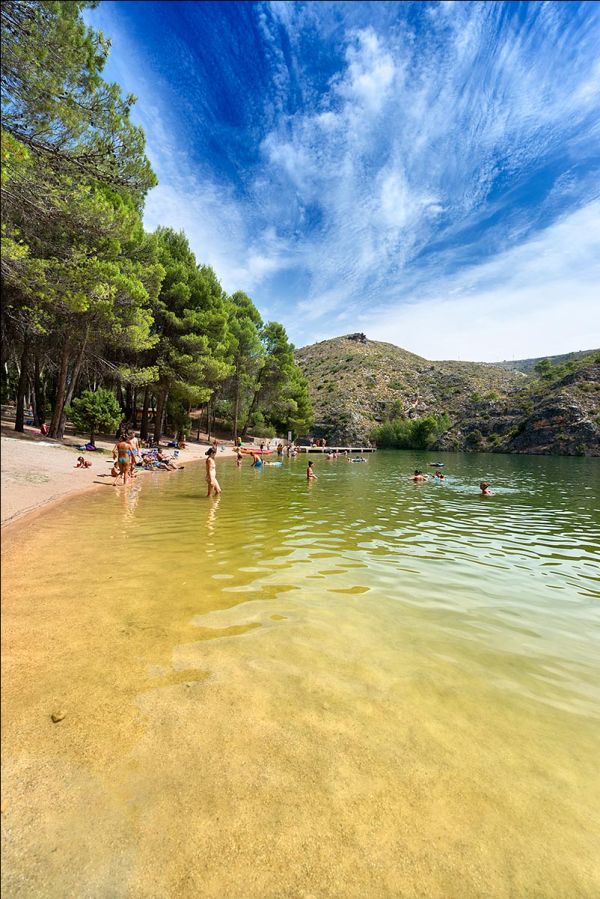El Mar de Castilla
Guadalajara, Cuenca
The reservoirs of Almoguera, Bolarque, Entrepeñas, Estremera and Zorita, fed by the waters of the Tajo, and the Buendía reservoir, in the lower Guadiela, are popularly known as the Sea of Castile.
Saddled between the provinces of Guadalajara and Cuenca –the Alcarria is home to the largest wetland area in the Peninsula. Lands with water, forests and blue skies take centre stage.
Without forgetting the rich heritage of the riverside towns –don’t miss Córcoles and its Monsalud Monastery or the Recópolis Archaeological Park–, which for decades have attracted thousands of visitors to their freshwater beaches and the options available in the area for nature lovers, either a relaxing hillside for contemplation, strolling and chilling out, or activities for the more adventurous types.
There is a wide range of outdoor sports on offer: hiking, mountain biking, horseback riding, canoeing, climbing, via ferrata, zip lines, and of course, fishing and water sports such as caving, canyoning or sailing in motor boats to explore hidden corners, beaches, and small, charming coves.
From the north, the Tajo waters trace delightful meanders before reaching the Entrepeñas reservoir. We can stop for a while in Durón, Alcocer or Pareja, where we’ll find a swimming area, before arriving in Sacedón, next to the reservoir water, where the wide range of water sports on offer is the main attraction.
In Sacedón, the Tajo waters continue their course. However, just over five kilometres away, the Cigüela waters shape the Buendía reservoir. The town of the same name is a cute medieval place preserving the remains of its old wall, and with two ‘Siamese” squares connected by a portico: the main square and the Ruiz Jarabo square.
The Tajo and Cigüela rivers finally meet at the Bolarque reservoir, which is in a stunning setting framed between the forested mountains making up the Altomira range. Atop one of the hills, the Anguix castle watches over the roads and waters of this Sea of Castle. The Bolarque Waterfall can be found where the Tajo and Guadiela rivers meet, a historical industrial complex erected in the early 20th century at the orders of the Marquis of Urquijo and inaugurated by Alfonso XIII, although references were made to its hydraulic activity in the 15th century.
Carefully check the water levels, as their fluctuation is essential so the swimming areas are enjoyed optimally.
May also be of interest to you
Castilla-La Mancha Tourism in 2023. All rights reserved.
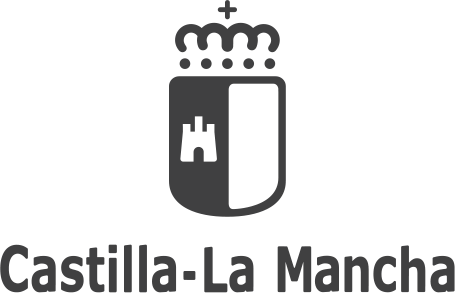
 365
365
